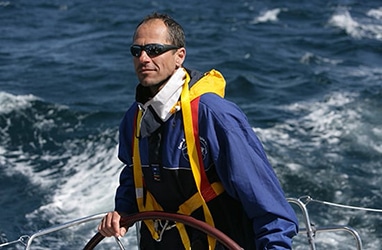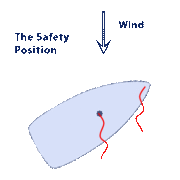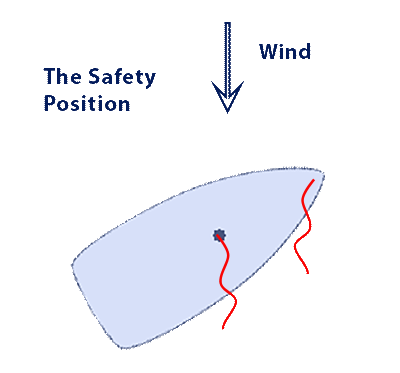Understanding the Safety Position in Sailing
The “Safety Position” refers to a controlled, depowered direction relative to the wind that allows the skipper to slow the boat’s motion without losing steerage and enables the skipper to quickly pick back up speed when desired. That is a long way of saying the boat is pointing in a close-reach direction (60 degrees off the wind) with the sails eased out and luffing (flapping).
Since the sails are luffing, there is no power in the sails, and so the boat slows almost to a stop. The skipper must still control the steerage to maintain the close reach direction. The boat will more than likely want to turn downwind if left alone because the force on the sails has moved forward in the boat, tending to push the bow downwind. When the skipper wants to speed back up, he or she simply trims the sails.
Practical Uses
The Safety Position thus allows time for teaching, observing, or reacting to a situation without turning the engine on.
- During MOB (Man Overboard) drills
- When practicing sail trim or instruction
- When needing a “pause” near a dock, buoy, or other boats
- While reefing sails under certain conditions
So in essence, the Safety Position is about control, not motion — a neutral gear for the wind-powered boat.









